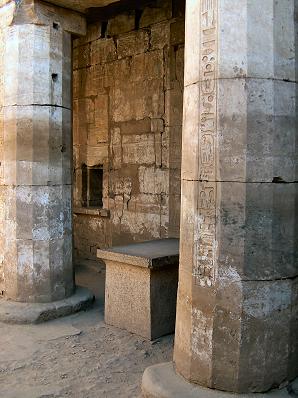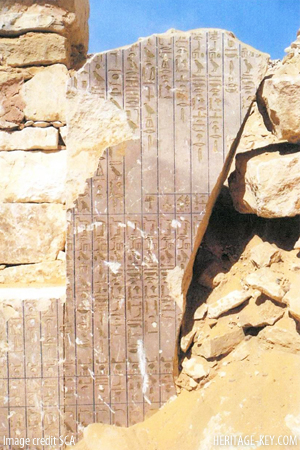 A French archaeological team digging at Saqqara has discovered the burial chamber of 6th Dynasty Queen Behenu, wife of either Pepi I or Pepi II. The burial chamber was revealed while the team was cleaning the sand from Behenu’s pyramid in the area of el-Shawaf in South Saqqara, west of the pyramid of King Pepi I.
A French archaeological team digging at Saqqara has discovered the burial chamber of 6th Dynasty Queen Behenu, wife of either Pepi I or Pepi II. The burial chamber was revealed while the team was cleaning the sand from Behenu’s pyramid in the area of el-Shawaf in South Saqqara, west of the pyramid of King Pepi I.
The burial chamber uncovered by the French mission is badly damaged, apart from two inner walls which contain engraved Pyramid Texts. Those texts were widely used in royal tombs carved on walls as well as sarcophagi – during the 5th and 6th Dynasties (circa 2465-2150BC).
Click the photo for a larger view.
Pyramid Texts are religious texts composed of spells primarily concerned with protecting the king’s remains, reanimating his body after death, and helping him ascend to the heavens. The spells delineate all of the ways the king could travel through the afterlife, including ramps, stairs, ladders, and most importantly, flight. The spells could also be used to call on the gods for help, even threatening them if they did not comply. Unlike the Book of the Dead, into which parts of the pyramid texts later evolved, these Old Kingdom texts were not illustrated.
Dr. Philippe Collombert, who heads the mission, said that further excavation inside the burial chamber led the team to the queen’s sarcophagus. He adds that although the sarcophagus is in good condition, it still stays unclear if this queen was the wife of Pepi I or Pepi II: “It is a well-preserved granite sarcophagus engraved with the queen’s different titles, but says nothing about the identity of her husband”.
The French mission has been working within the necropolis of Pepi I at Saqqara, where they discovered the 25 meter long pyramid of Behenu and Pyramid Text fragments, since 2007. They have located a total of seven ‘queen pyramids’ dating to the reigns of Pepi I and Pepi II rulers of the 6th Dynasty – since the beginning of their project in 1989. The pyramids have been attributed to Queens Inenek, Nubunet, Meretites II, Ankhespepy III, Miha, and a yet unidentified queen.
 Using the latest techniques in forensic archaeology, the University of Reading has revealed a new image of multi-cultural Roman Britain. New research demonstrates that 4th century ADYork had individuals of North African descent moving in the highest social circles.
Using the latest techniques in forensic archaeology, the University of Reading has revealed a new image of multi-cultural Roman Britain. New research demonstrates that 4th century ADYork had individuals of North African descent moving in the highest social circles.
 “To date, we have had to rely on evidence of such foreigners in Roman Britain from inscriptions. However, by analysing the facial features of the Ivory Bangle Lady and measuring her skull compared to reference populations, analysing the chemical signature of the food and drink she consumed, as well as evaluating the evidence from the burial site, we are now able to establish a clear profile of her ancestry and social status,” adds Dr Eckardt.
“To date, we have had to rely on evidence of such foreigners in Roman Britain from inscriptions. However, by analysing the facial features of the Ivory Bangle Lady and measuring her skull compared to reference populations, analysing the chemical signature of the food and drink she consumed, as well as evaluating the evidence from the burial site, we are now able to establish a clear profile of her ancestry and social status,” adds Dr Eckardt.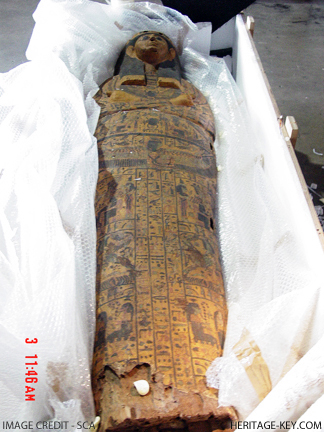 After two years of investigation and negotiation, the 21st Dynasty coffin of Imesy is being returned to Egypt. Minister Farouk Hosni describes the coffin as beautifully plastered and painted with colourful religious scenes.
After two years of investigation and negotiation, the 21st Dynasty coffin of Imesy is being returned to Egypt. Minister Farouk Hosni describes the coffin as beautifully plastered and painted with colourful religious scenes.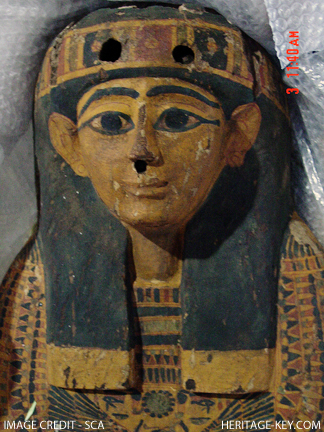 Arrangements are currently underway for the coffin to be handed over to the SCA in early March, when
Arrangements are currently underway for the coffin to be handed over to the SCA in early March, when 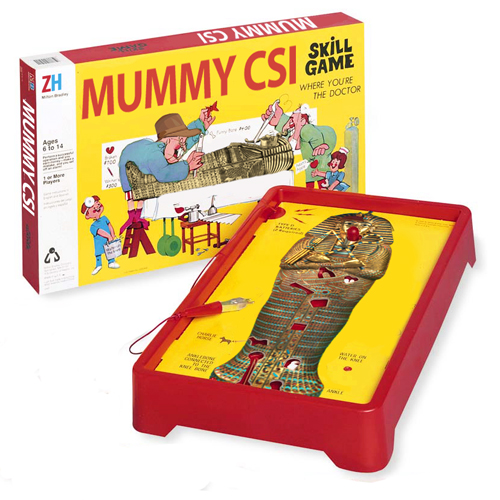

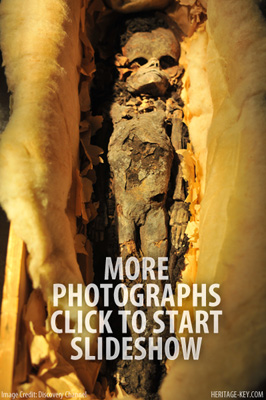



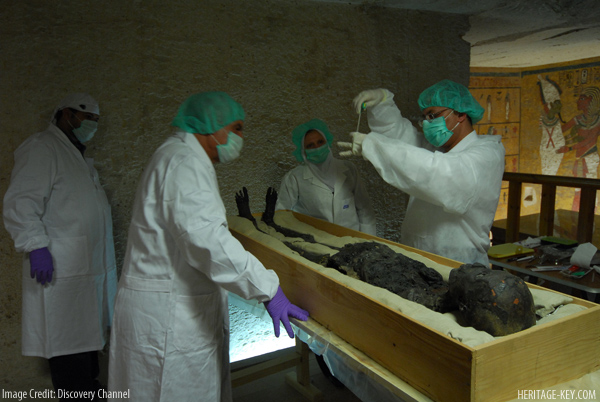


 Ahead of
Ahead of 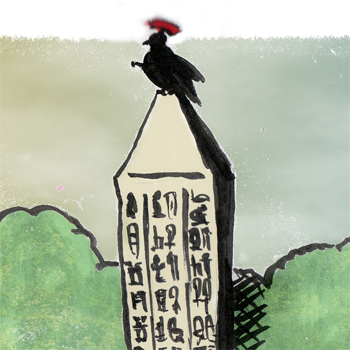
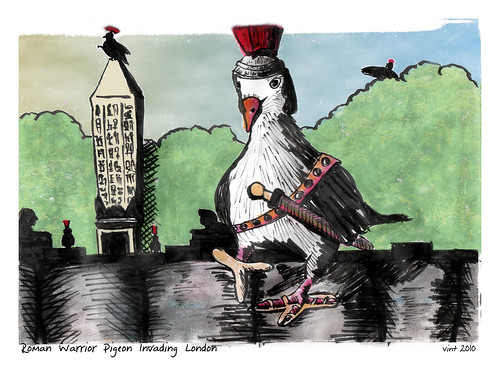
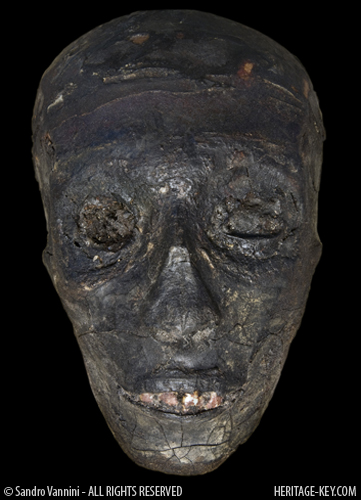 This Wednesday the long awaited results of the DNAresearch on King Tut’s mummy – and some of his possible family members – will be announced at a press conference with Egyptian Minister of Culture, FaroukHosni and Dr. Zahi Hawass. They will announce new discoveries surrounding the family of Tutankhamun and the cause of the young king’s death.
This Wednesday the long awaited results of the DNAresearch on King Tut’s mummy – and some of his possible family members – will be announced at a press conference with Egyptian Minister of Culture, FaroukHosni and Dr. Zahi Hawass. They will announce new discoveries surrounding the family of Tutankhamun and the cause of the young king’s death. 
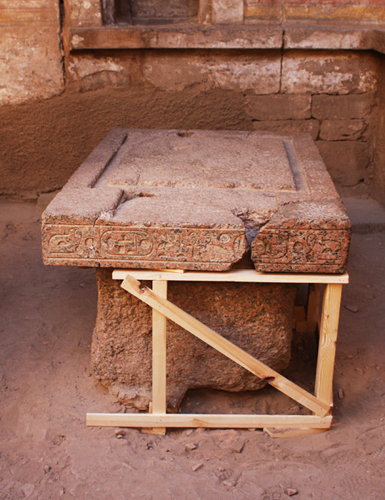 Egypt’s Minister of Culture Farouk Hosni and Dr. Zahi Hawass returned a piece of red granite belonging to an ancient Egyptian temple to its rightful place – the base of Amenemhat I’s naos. Both officials are
Egypt’s Minister of Culture Farouk Hosni and Dr. Zahi Hawass returned a piece of red granite belonging to an ancient Egyptian temple to its rightful place – the base of Amenemhat I’s naos. Both officials are 